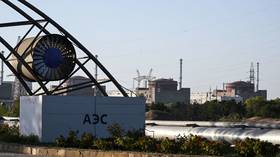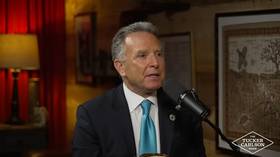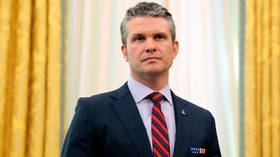How to set up an Al-Qaeda cell

Shortly before my visit to Iraq, I met up with Iraqi Shia and Sunni guerillas in Lebanon, who were members of fighting squads and members of the Ba’ath Party (the ruling Arab Socialist party under Saddam).
The world’s media was putting special emphasis on the fact that Al-Qaeda was going to disrupt the elections back then. Many made suggestions that the Ba’ath Party and Al-Qaeda in Iraq were practically one and the same thing.
Iraqi guerrillas used to say that the authorities wanted to turn the election in the devastated country into a show. I asked my interviewees, who were members of the Sunni resistance movement in Beirut, if they were members of Al-Qaeda, as it was alleged. I asked them if we could discuss that issue in the interview. And they stopped speaking English. Those people were seriously offended. I had to say that I was joking. But I am not sure that they forgave me.
When we made up with each other, they described every day of the time when the guerrilla war against the occupation began and about the uprising in Fallujah.
The first large-scale resistance operation was launched against the Americans in al-Fallujah in spring 2004, a year after the country’s occupation. The entire village, located 100 kilometers away from Baghdad, rebelled, though the Americans believed they had won totally.
The Americans had to retreat from the village. They started bombarding al-Fallujah with depleted uranium missiles, launched a gas attack, burned women and children alive – I saw the pictures; they are on the web as well.
Even women fought together with men. It’s very rare in the Islam world – women take up arms only in extreme situations.
There was growing international discontent over the cruelty of the Americans. That’s when the Americans declared that it was not Iraqi guerrillas, but the sinister Al-Qaeda fighting against them in al-Fallujah. To be more exact, its Iraqi cell.
How on earth could that happen?
Just like the chemist Zarqawi became the Al-Qaeda’s second in command.
Surprisingly, though while accusing Saddam of the seven deadly sins since 1990, the Americans were not smart enough to accuse him of ties with Al-Qaeda.
There was no pretext.
And just after a year of the Iraqi occupation, Al-Qaeda appeared in Iraq.
The Western public remembers every movement, no matter how absurd it might be, if it has a name and a leader. The Americans, like no one else in the world have mastered the technicalities of information warfare.
They declared that the head of the Iraqi cell of Al-Qaeda is the person, whose name was al-Zarqawi.
The name was not new to the public. People remembered it from a speech by Colin Powell. In 2003 the Secretary of State Powell was trying to convince the world and the UN that Saddam was producing weapons by showing a test tube that allegedly contained poisonous ricin produced in Iraq – to no effect.
That’s when he mentioned Zarqawi, describing him as a chemical saboteur coming from Jordan. Powell described him as a one-legged person, who had an office in Baghdad in Northern Iraq and managed poison deliveries to Europe for sabotage purposes.
Not a single word was said about Zarqawi’s having anything to do with Al-Qaeda.
A year passed, and all of a sudden Zarqawi turned from a chemist and a loser into a cell head of one of the most powerful terrorist organizations.
Video recordings appeared, too. It showed Zarqawi who recently had only one leg walking cheerfully on two legs in white sneakers, beheading an American and speaking without any Jordanian accent.
The way the terrorist with 20 years of experience handled his weapon was none the less surprising – he simply did not know how to handle it.
But the role of Zarqawi was not limited to that.
In summer 2004, Iraqi Shia of the Mahdi Army headed by Muqtada al-Sadr rebelled against the occupation. The rebellion was spreading to more and more cities. The Sunni-supported al-Sadr.
In response the American declared that Sunni Zaqawi was linked with Shia Iran and co-ordinated orders coming from Iran and actions of Shia guerrillas.
There appeared leaflets in his name insulting Shia and calling for their destruction.
A Shia holy Mosque was bombed, then a rumor spread that it was done by the Sunnis. Only joint efforts by the Muslim communities stopped the country from plunging into a full-scale religious civil war. Instead of fighting the invaders, the Shi’ites and Sunnis would be killing each other
But the US had made a miscalculation that time, while Muslims, on the other hand, showed good political foresight.
It is obvious now that the Zarqawi media project has ceased to be a priority for whoever organized it. It was announced in 2006 that he had been killed with a missile. I won’t tell you how hard the Iranian journalists laughed (I was in Iran at the time) when the US started telling their story about how they got Zarqawi.
The skeptics
A lot of people in Iraq believe that Al-Qaeda cells exist in their country. So do Americans, because if they didn’t believe in Al-Qaeda, they would have to start calling terrorists “guerillas” and then admit that the war in Iraq is not a war for democracy, but one fought against the people. One can also understand the Iraqis who believe in Al-Qaeda: they have to find a way to justify the fact they are co-operating with the occupant authorities, rather than fighting against them.
But not everyone is so trusting.
One of the men I spoke to in Afghanistan, for instance, does not believe in the shadowy terrorist structure. I have yet to meet an Afghan who believes that it was from his country that the 9/11 attack was ideologically masterminded. Not even the commander of the Afghan army, General Abdul Rahim Wardak, who was educated in the US and spent many years living there, believes in Al-Qaeda. He told me that he met Osama bin Laden in the 1980s, but bin Laden’s name in those days was Abu Abdullo. Wardak was then fighting on the Mujahideen side against the Soviet forces. He said that in those days, bin Laden was working on creating shelters and secret paths for the Afghan guerilla forces. General Wardak believed in Osama bin Laden, but he did not believe that the US army was fighting Al-Qaeda in Afghanistan. He understands the difference very well, for he is himself an Afghan native, albeit one loyal to the Americans. I think that if he had been speaking to a US journalist, he would not disappoint the journalist with his skepticism: Afghans are very tactful people and they try not to upset their conversation partners.
The US invaded Afghanistan because Al-Qaeda was supposedly headquartered there. Then again, they could not even convince all their allies that Al-Qaeda exists.
The man who showed me bin Laden’s house in Kabul doesn’t believe in Al-Qaeda. Neither does Peter, an Englishman I met who has lived in Kabul for several dozen years and walked all over the country.
Pakistanis don’t believe in Al-Qaeda either. I have been told this by Pakistan’s top-ranking interdepartmental intelligence officers, the people whose direct responsibility is fighting underground terrorism.
The look that appears on the faces of these officers when they are posed a question about Al-Qaeda is very similar to that of the Iraqi guerillas when they are asked the same question. They obviously start trying to figure you out: are you an American spy or just stupid for repeating propaganda clichés.
But let us get back to Baghdad.
The ghost of Baghdad
I share my thoughts with Iraqi journalists living in Baghdad. In return, they tell me that some of their colleagues did an interview with Al-Qaeda in 2004.
“So find the interview.”
They look, but return empty-handed. They then start trying to convince me that the video recordings of various Islamic leaders’ statements that have been televised repeatedly all around the world for several years are, in fact, the interviews. They soon admit, however, that these strange tapes are showing something different from a conversation with a journalist.
”But still, Al-Qaeda is very strong in Iraq,” they say.
”Who do you think is leading the Iraqi cell?” I ask.
“A horrible man by the name of Abu Omar al-Baghdadi. We don’t even know what he looks like.”
It takes five minutes to find two portraits of the mythical al-Baghdadi. He is incriminated with horrible murders. Both US and Iraqi speakers have stated repeatedly that the man does not exist.
Yet soon after these statements have been made, al-Baghdadi’s name appeared in media reports time after time. He is a phantom. As long as the war lasts, phantoms will be needed.
Because, if there is no Al-Qaeda, then who have the Americans been fighting against for 9 years in Afghanistan and 7 years in Iraq? And why did they come there in the first place?
Nadezhda Kevorkova for RT













